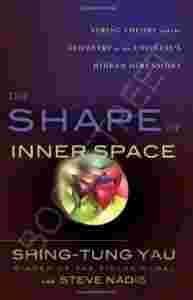|
The leading mind behind the mathematics of string
theory discusses how geometry explains the universe we
see What if you were told that we actually live in a
10-dimensional universe-- that the leading theory of
nature posits only 4 out of 10 are accessible to our
everyday senses? How do we account for the other 6
dimensions? What do they look like, where are they
hiding, and what, if anything at all, do they do? In The
Shape of Inner Space, geometer and leading string
theorist Shing- Tung Yau unpacks the widely-held belief
that these undetected dimensions are tightly curled in
elaborate, twisted shapes called ''Calabi-Yau
manifolds.'' Yau explains that these spaces are so
miniscule that humans will probably never see any of
them directly. Amazingly, however, this hidden realm may
hold the answers to some of the most profound questions
we have about our universe. In examining his life's
work, Yau emphasises his most important finding: proof
of the manifold's mathematical existence. This discovery
has been critical in advancing our understanding of
geometry and string theory, and, more broadly, physics
and the universe.With this acquired knowledge, string
theorists can go beyond the concept of the universe that
Einstein left us with, and possibly expose some of
nature's greatest mysteries. A fascinating exploration
of a world we are only just beginning to grasp, The
Shape of Inner Space will change the way we think about
mathematics, cosmology, and our quest to learn the shape
of the inner universe. |
|

